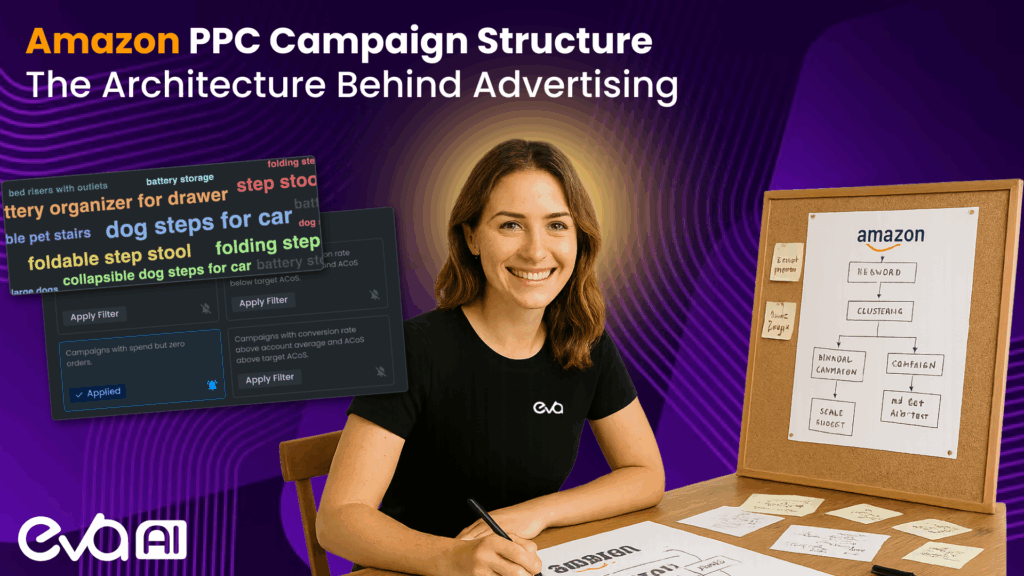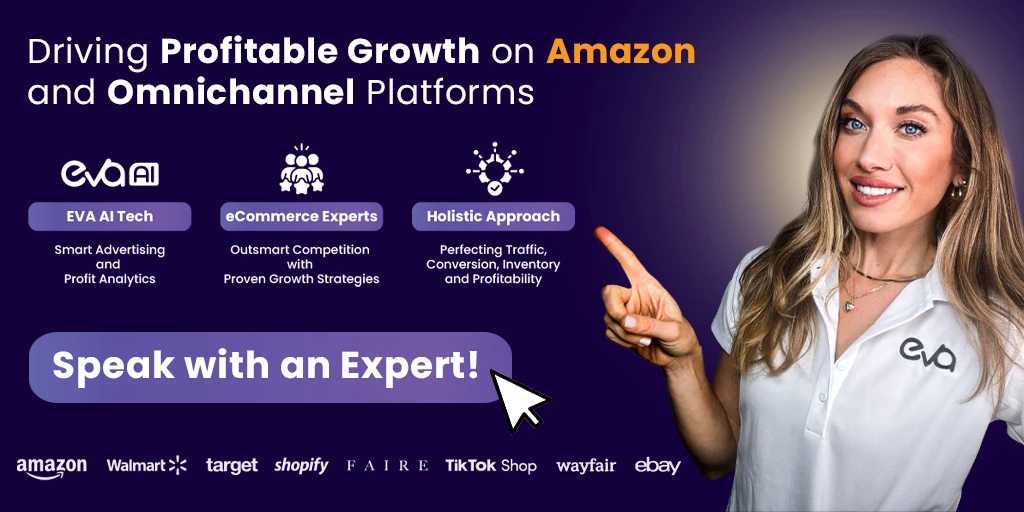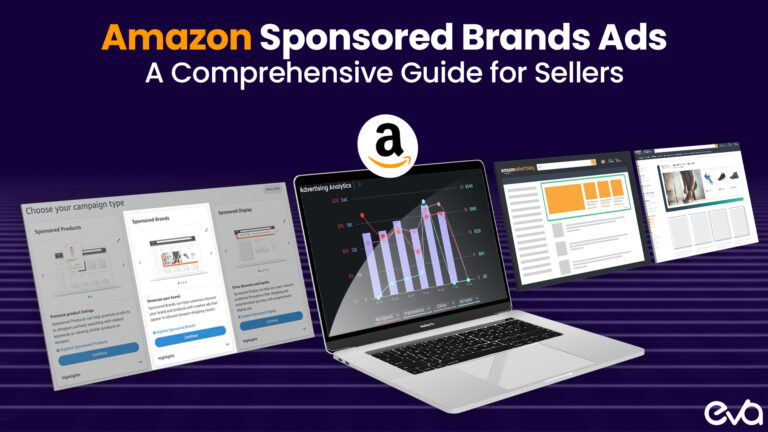Most Amazon sellers approach PPC campaigns like throwing spaghetti at the wall. Create a few auto campaigns, add some keywords, and hope something sticks. Meanwhile, the sellers pulling down seven-figure revenues have discovered that campaign structure isn’t just organization – it’s competitive warfare.
The gap between amateur and professional Amazon advertising isn’t about spending more money. It’s about building campaign architectures that systematically extract maximum value from every advertising dollar while simultaneously training Amazon’s algorithm to favor your products organically.
After analyzing thousands of advertising accounts, a clear pattern emerges: sellers with methodical campaign structures consistently outperform those with random approaches by 300-400%. The difference lies in treating campaigns as interconnected systems rather than isolated experiments.
Table of Contents
- Why Amazon’s Algorithm Judges Your Campaign Architecture
- The RACI Campaign Framework: Responsibility Assignment for Maximum Performance
- The Waterfall Keyword Migration System
- Advanced Bid Strategy Mathematics
- Campaign Architecture Case Study: Home & Garden Seller
- The Technology Stack for Professional Campaign Management
- Implementation Roadmap: From Chaos to Control
- Professional Campaign Management Advantages
- How Eva’s Professional Campaign Architecture Can Help
Why Amazon’s Algorithm Judges Your Campaign Architecture
Amazon’s A10 algorithm doesn’t just evaluate individual keywords or bids. It analyzes your entire advertising behavior to determine advertiser quality. Accounts with coherent campaign structures signal professionalism and long-term commitment, earning algorithmic preference that extends beyond paid placement.
Here’s what Amazon’s algorithm notices about your campaign architecture:
Keyword Organization Patterns Random keyword distribution across campaigns suggests poor account management. Strategic keyword grouping by intent, product, and competition level demonstrates sophisticated advertising strategy that Amazon rewards with better ad placement efficiency.
Bid Logic Consistency Accounts with logical bid relationships – where related keywords have sensible bid hierarchies – perform better than accounts with arbitrary bidding. Amazon’s machine learning identifies these patterns and allocates impression opportunities accordingly.
Negative Keyword Discipline Professional accounts implement systematic negative keyword strategies that prevent internal competition and budget waste. This discipline signals to Amazon that your advertising spend is intentional rather than accidental.
The RACI Campaign Framework: Responsibility Assignment for Maximum Performance
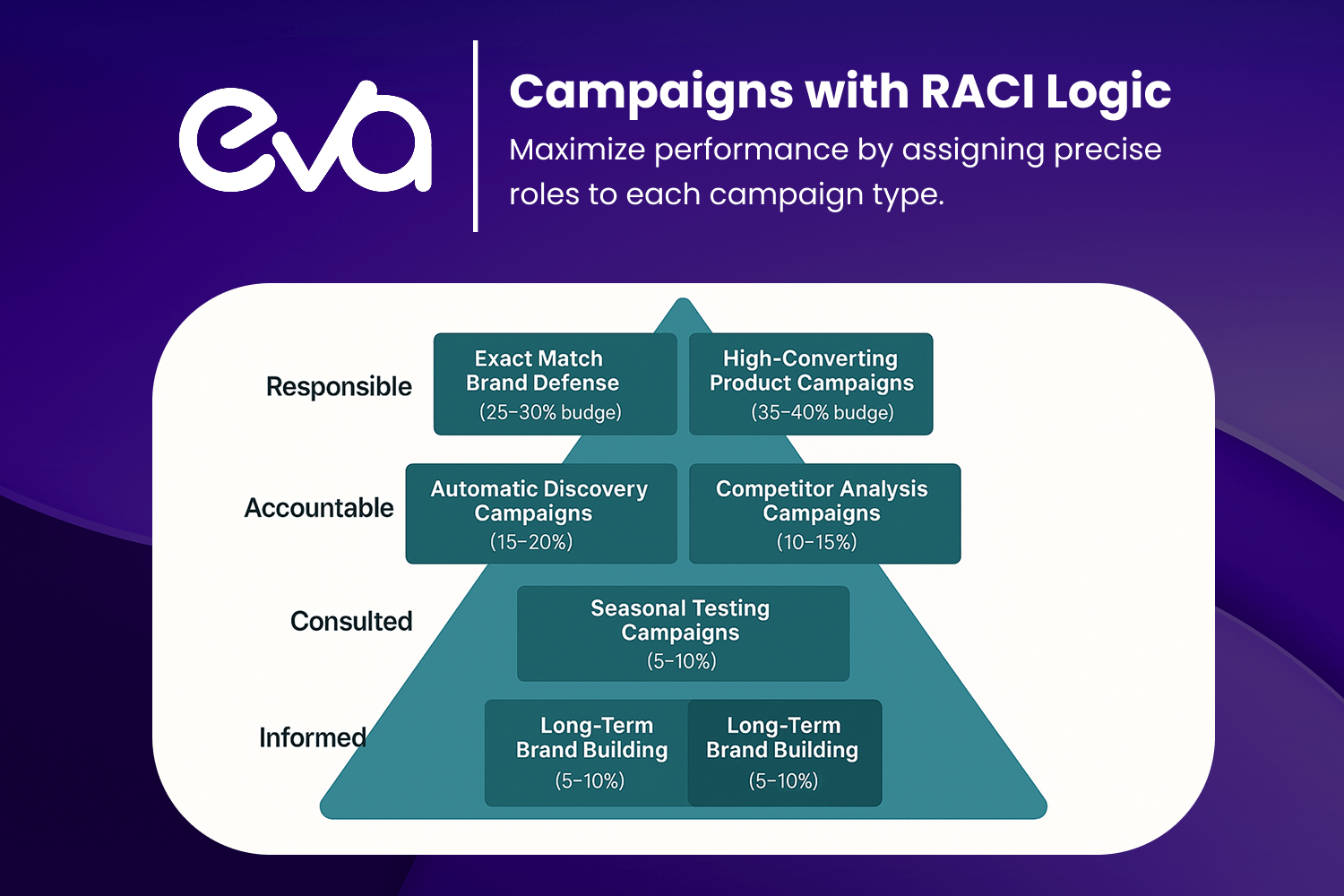
Professional Amazon advertisers use the RACI framework to assign specific roles to different campaign types, ensuring every campaign serves a distinct purpose without overlap.
Responsible Campaigns: Primary Revenue Drivers
These campaigns carry the bulk of your advertising investment and revenue expectations.
Exact Match Brand Defense
- Purpose: Protect your brand terms from competitor attacks
- Budget: 25-30% of total ad spend
- Management: Daily monitoring with aggressive bid adjustments
- Success Metrics: 90%+ impression share on brand terms, 6-8x ROAS minimum
High-Converting Product Campaigns
- Purpose: Scale proven winners with maximum efficiency
- Budget: 35-40% of total ad spend
- Management: Systematic bid increases on profitable keywords
- Success Metrics: 4-6x ROAS with consistent volume growth
Accountable Campaigns: Performance Monitoring
These campaigns provide data and insights that inform strategy adjustments.
Automatic Discovery Campaigns
- Purpose: Continuous keyword research and market intelligence
- Budget: 15-20% of total ad spend
- Management: Weekly search term harvesting, aggressive negative keyword addition
- Success Metrics: New keyword discovery rate, cost-per-click efficiency
Competitor Analysis Campaigns
- Purpose: Monitor competitive landscape and identify opportunities
- Budget: 10-15% of total ad spend
- Management: Bi-weekly competitive bid analysis and strategy adjustment
- Success Metrics: Market share capture rate, competitive displacement
Consulted Campaigns: Supporting Intelligence
These campaigns provide contextual data that influences broader strategy decisions.
Seasonal Testing Campaigns
- Purpose: Validate seasonal keyword opportunities before major investment
- Budget: 5-10% of total ad spend during testing periods
- Management: Monthly seasonal trend analysis and preparation
- Success Metrics: Seasonal conversion rate validation, trend prediction accuracy
Informed Campaigns: Passive Monitoring
These campaigns require minimal management but provide valuable background data.
Long-Term Brand Building
- Purpose: Maintain consistent brand presence across broader keyword sets
- Budget: 5-10% of total ad spend
- Management: Quarterly review and adjustment cycles
- Success Metrics: Brand awareness metrics, market penetration rates
The Waterfall Keyword Migration System
Amateur advertisers keep keywords in the same campaigns indefinitely. Professionals use systematic keyword migration that moves terms through increasingly specific campaign types based on performance data.
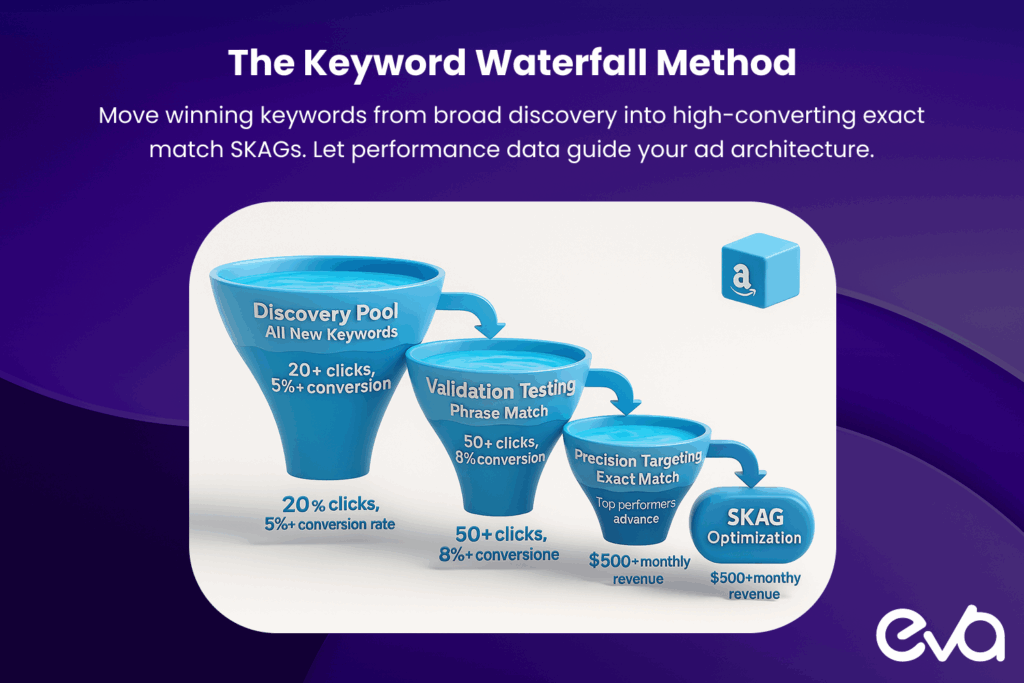
Stage 1: Discovery Pool
All new keywords start in broad discovery campaigns with conservative bids. This stage identifies which terms have potential without risking significant budget.
- Migration Criteria: Keywords with 20+ clicks and 5%+ conversion rate advance to Stage 2
- Timeline: 2-4 weeks depending on traffic volume
- Management: Weekly search term report analysis
Stage 2: Validation Testing
Promising keywords move to phrase match campaigns with moderate bids for deeper performance analysis.
- Migration Criteria: Keywords maintaining 8%+ conversion rate with 50+ clicks advance to Stage 3
- Timeline: 4-6 weeks for statistical significance
- Management: Bi-weekly performance review and bid optimization
Stage 3: Precision Targeting
Validated keywords move to exact match campaigns with aggressive bids for maximum profitability.
- Migration Criteria: Top performers get dedicated Single Keyword Ad Groups (SKAGs)
- Timeline: Ongoing optimization based on performance
- Management: Daily monitoring and strategic bid adjustments
Stage 4: SKAG Optimization
The highest-performing keywords receive dedicated campaigns for granular control and maximum profitability.
Benefits: 35-50% improvement in keyword-level ROAS compared to grouped keywords Requirements: Minimum $500 monthly keyword revenue to justify dedicated campaign Management: Real-time bid optimization and creative testing
Advanced Bid Strategy Mathematics
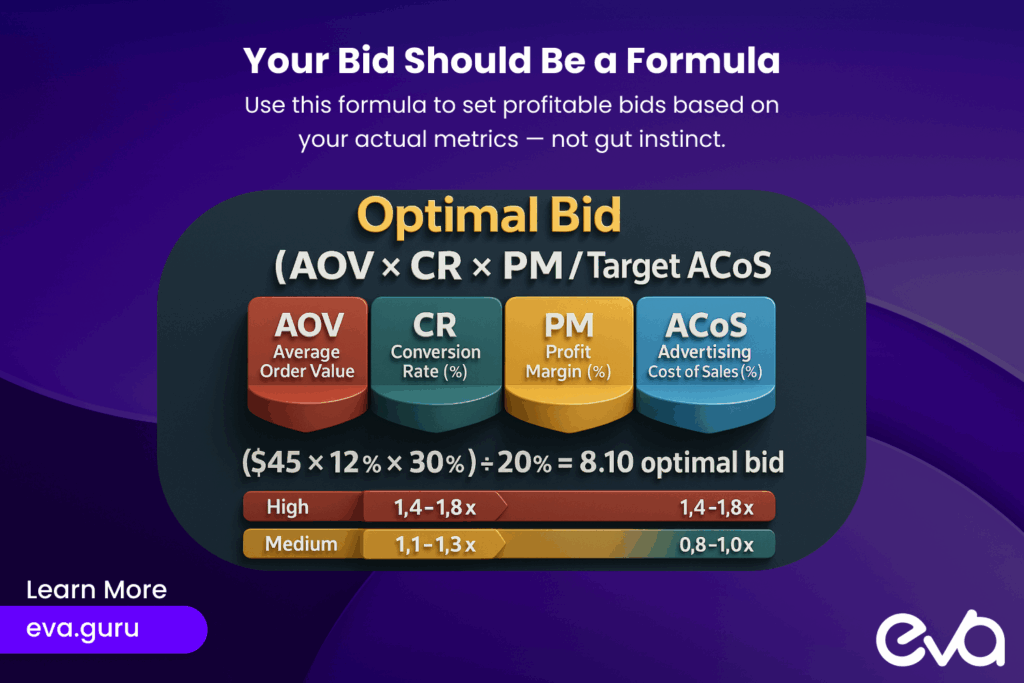
Professional Amazon advertisers use mathematical models rather than intuition for bid decisions.
The Profit Velocity Formula
Optimal Bid = (Average Order Value × Conversion Rate × Profit Margin) ÷ Target ACoS
This formula ensures every bid decision considers the complete profit equation rather than just advertising metrics.
Competitive Pressure Multipliers
Base bids get adjusted based on competitive intensity:
- High competition markets: Base bid × 1.4-1.8
- Medium competition markets: Base bid × 1.1-1.3
- Low competition markets: Base bid × 0.8-1.0
Seasonal Adjustment Factors
Bid multipliers change based on historical seasonal performance:
- Peak season: Base bid × 1.2-2.0 depending on category
- Normal season: Base bid × 1.0
- Low season: Base bid × 0.6-0.8 with increased negative keywords
Campaign Architecture Case Study: Home & Garden Seller
Starting Position: $50K monthly ad spend generating 18% ROAS across 15 disorganized campaigns
Architectural Redesign Process:
Month 1: Foundation Restructuring
- Consolidated 15 campaigns into 8 strategically designed campaign types
- Implemented waterfall keyword migration system
- Established systematic negative keyword processes
Month 2: Optimization Implementation
- Deployed mathematical bid strategies based on profit velocity
- Introduced competitive pressure multipliers
- Began systematic SKAG development for top performers
Month 3: Performance Amplification
- Scaled successful campaign structures across entire catalog
- Implemented advanced dayparting and placement strategies
- Optimized budget allocation based on campaign role hierarchy
Results After 90 Days:
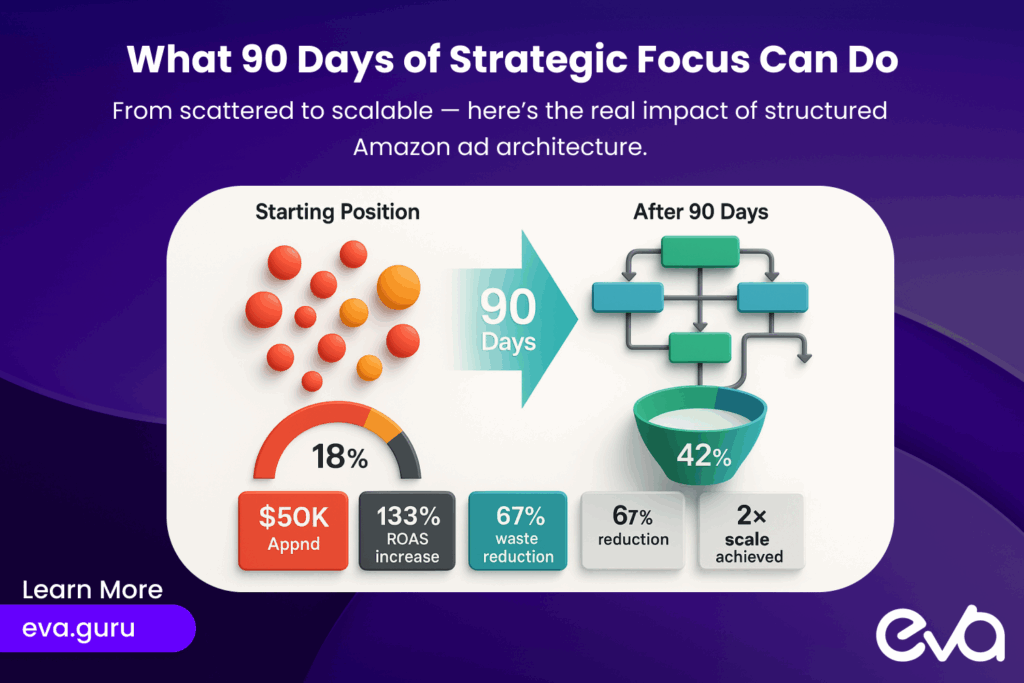
- ROAS improvement: 18% to 42% (133% increase)
- Cost efficiency: 67% reduction in wasted spend
- Scale achievement: Doubled ad spend while maintaining profitability
- Organic benefits: 85% of products showed improved organic rankings
The Technology Stack for Professional Campaign Management
Campaign architecture success requires tools that most individual sellers cannot cost-effectively access:
Bid Management Automation
- Hourly bid adjustments based on real-time conversion data
- Inventory-aware bidding that prevents spending on out-of-stock products
- Competitive response systems that adjust bids based on competitor actions
Performance Attribution Analysis
- Cross-campaign impact measurement showing how campaigns influence each other
- Organic ranking correlation tracking advertising’s impact on organic performance
- Customer lifetime value integration optimizing for long-term profitability rather than immediate ROAS
Predictive Optimization
- Seasonal trend forecasting that adjusts campaign structure before demand changes
- Inventory planning integration that aligns advertising with stock levels
- Market opportunity identification that suggests new campaign opportunities
Implementation Roadmap: From Chaos to Control
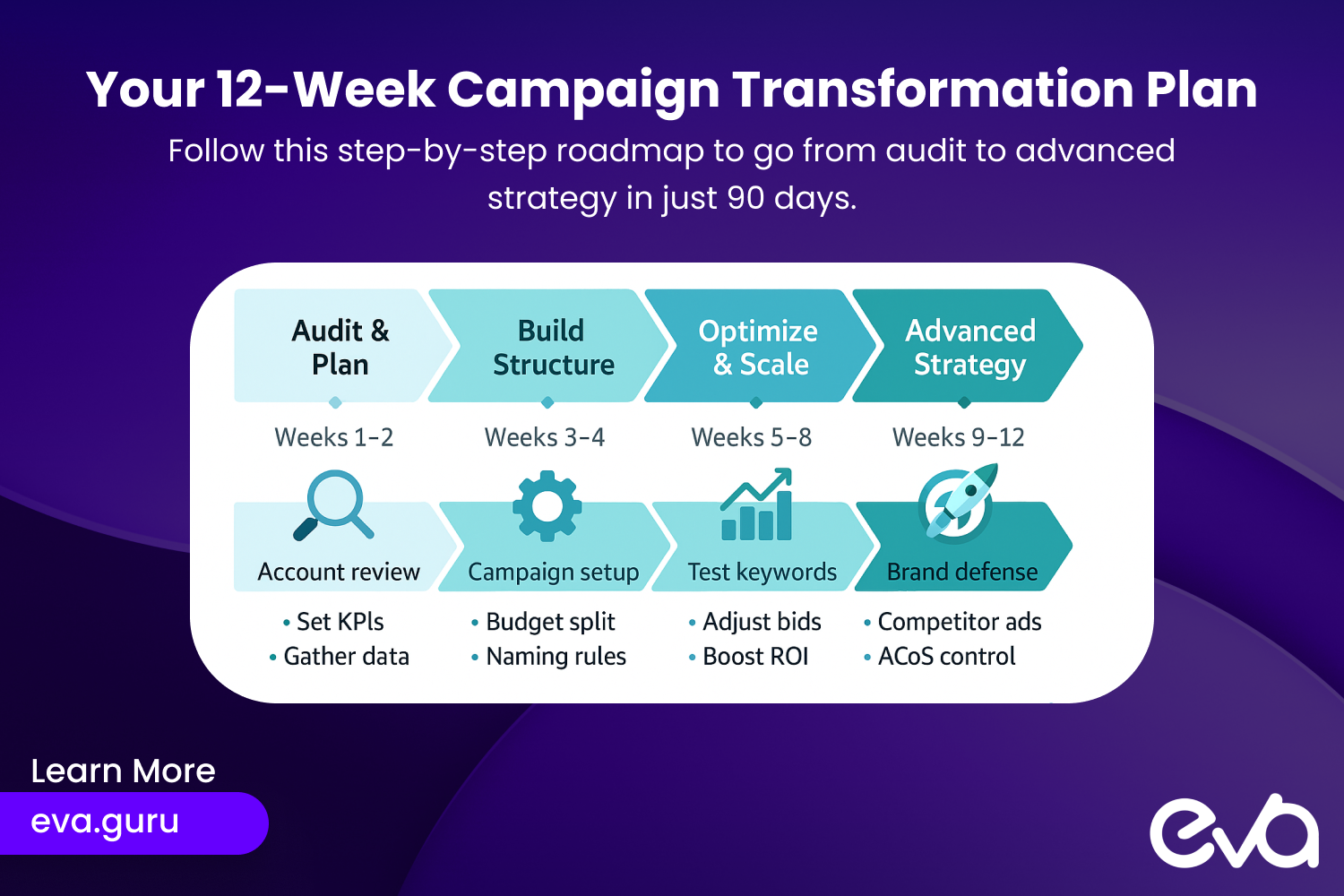
Week 1-2: Audit and Planning
- Campaign audit: Identify redundancies, gaps, and structural inefficiencies
- Keyword analysis: Categorize all keywords by intent, performance, and strategic value
- Budget reallocation: Plan new budget distribution based on RACI framework
Week 3-4: Structural Implementation
- Campaign restructuring: Build new campaign architecture with clear role definitions
- Keyword migration: Begin systematic movement of keywords to appropriate campaign types
- Negative keyword deployment: Implement comprehensive negative keyword strategy
Week 5-8: Optimization and Scaling
- Mathematical bid implementation: Deploy profit-based bidding strategies
- Performance monitoring: Establish weekly optimization rhythms and KPI tracking
- SKAG development: Begin creating dedicated campaigns for top-performing keywords
Week 9-12: Advanced Strategy Deployment
- Competitive campaigns: Launch aggressive competitor targeting initiatives
- Seasonal preparation: Implement seasonal strategy frameworks
- Cross-platform integration: Coordinate Amazon campaigns with other marketplace advertising
Professional Campaign Management Advantages
The most successful Amazon sellers understand that campaign structure creates compound advantages that extend far beyond immediate advertising returns.
Algorithmic Preference Well-structured campaigns earn favorable treatment from Amazon’s algorithm, improving both paid placement efficiency and organic ranking opportunities.
Scalability Without Chaos Professional structures enable rapid scaling without performance degradation. New products can be immediately integrated into proven frameworks.
Competitive Intelligence Systematic campaign organization reveals competitive patterns and market opportunities that chaotic approaches miss.
Predictable Performance Methodical structures produce predictable results that enable accurate forecasting and strategic planning.
The gap between amateur and professional Amazon advertising continues widening as algorithmic sophistication increases. Sellers committed to long-term success must graduate from tactical campaign management to strategic campaign architecture.
How Eva’s Professional Campaign Architecture Can Help
The complexity of implementing and maintaining professional-grade PPC structures requires specialized expertise and technology platforms that individual businesses struggle to develop internally.
Eva’s advertising intelligence platform delivers the campaign architecture sophistication that separates market leaders from struggling competitors. Our systems analyze over $1.6 billion in advertising performance to identify the exact structural elements that drive sustained profitability.
Systematic Campaign Intelligence Eva’s AI designs campaign architectures specifically for your market conditions, competitive landscape, and growth objectives. We don’t use generic templates – we engineer custom structures that maximize your specific opportunities.
Advanced Automation Capabilities
Our platform handles the complex optimization requirements that professional structures demand: mathematical bid calculations, systematic keyword migration, competitive response systems, and cross-campaign performance attribution.
Strategic Growth Integration Eva’s experts work with your team to implement campaign architectures that support your broader business objectives, ensuring advertising strategy aligns with inventory planning, product development, and market expansion goals.
The brands achieving sustainable Amazon advertising success understand that structure creates sustainable competitive advantages. Every month of professional campaign architecture compounds your marketplace position.
Claim your free brand audit and discover how Eva’s campaign architecture expertise can completely transform your advertising performance.

